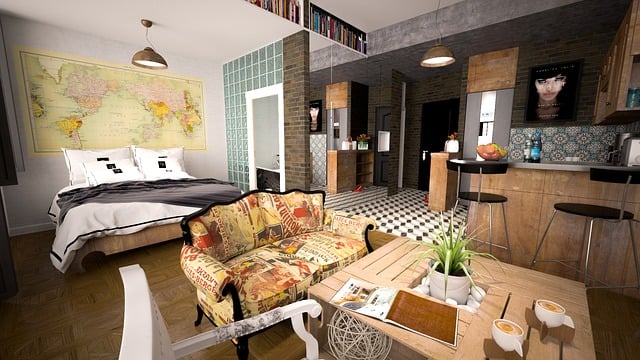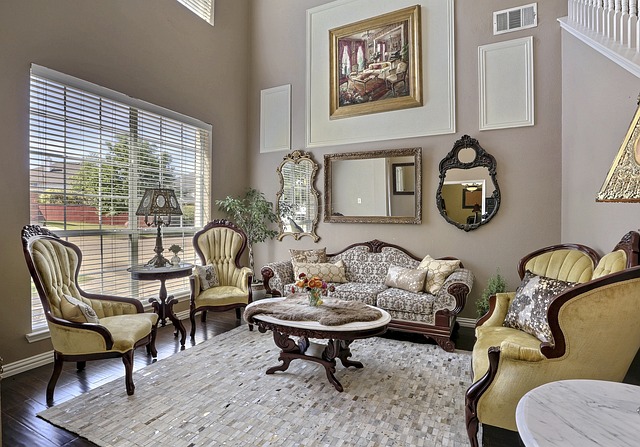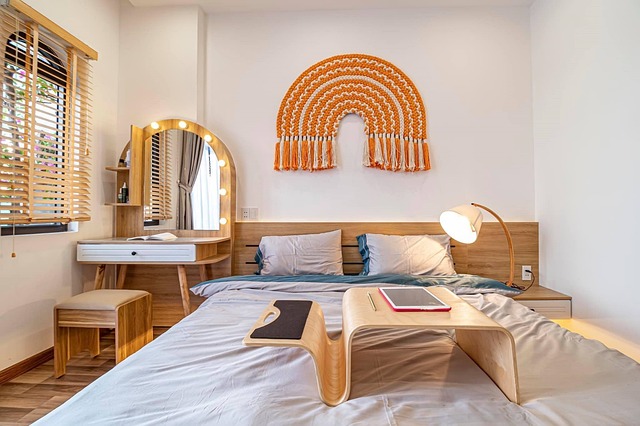This article explores the Art Deco Revival in modern design and how it is being reinterpreted for contemporary tastes.
What is Art Deco
The Art Deco style, which emerged in the 1920s and 1930s, is experiencing a vibrant revival. Known for its bold geometric shapes, luxurious materials, and rich colors, Art Deco has left an indelible mark on design history.
Critical Characteristics of Art Deco
Several distinctive features define Art Deco:
- Geometric shapes and patterns
- Bold colors and contrast
- Luxurious materials such as brass, glass, and marble
- Symmetry and repetition
Modern Interpretations of Art Deco
Today’s designers are breathing new life into Art Deco by integrating modern elements:
- Using technology and modern materials
- Simplifying forms while maintaining a nod to the past
- Employing contemporary color palettes and textures
- Fusing Art Deco with other design styles such as minimalist and industrial
Art Deco in Interior Design
Living Rooms
Furniture, lighting, and decor that embrace Art Deco’s bold aesthetics can transform a living room into a glamorous space. Look for sofas with clean lines, metallic accents, and bold geometric patterns. Statement lighting, such as chandeliers with a mix of glass and metal, can also add a touch of Art Deco elegance.
Kitchens
In kitchens, the Art Deco style can be seen in sleek cabinetry, luxurious countertops, and high-end appliances. Materials like marble and brass are popular choices. To complete the look, incorporate geometric backsplash tiles and bold cabinet hardware.
Bedrooms
Luxurious textiles, elegant furniture, and striking accents characterize Art Deco bedrooms. Think velvet headboards, mirrored nightstands, and rich color palettes. Incorporate geometric patterns in bedding and wall art to enhance the Art Deco vibe.
Bathrooms
Bathrooms can also benefit from Art Deco design elements. Consider installing black and white tile patterns, gold fixtures, and artfully designed mirrors. These elements can create a sophisticated and stylish space reminiscent of the 1920s glamour.
Art Deco in Architecture
The influence of Art Deco extends to architecture, both in facades and interior details:
- Facade elements such as decorative motifs and window designs are being revived in modern architecture. Buildings embrace streamlined forms and ornamental details from the Art Deco era.
- Interior architectural details like moldings, staircases, and built-in furniture are being designed with an Art Deco flair. These elements add a touch of sophistication and elegance to contemporary spaces.
- Public buildings and commercial spaces also incorporate Art Deco elements to create eye-catching and memorable environments. The use of luxurious materials and bold designs makes these spaces stand out.
Art Deco Revival in Fashion and Accessories
Art Deco’s influence is also evident in fashion and home accessories:
- Clothing with geometric shapes, bold patterns, and luxurious fabrics is returning. Designers are drawing inspiration from the 1920s and 1930s to create modern pieces that capture the essence of Art Deco.
- Jewelry featuring bold, geometric designs and luxurious materials is also trending. Statement pieces incorporating onyx, emeralds, and diamonds are popular choices.
- Home accessories such as vases, clocks, and mirrors that capture the essence of Art Deco are being sought after. These pieces can add a touch of glamour and sophistication to any room.
Case Studies of the Art Deco Revival
Explore examples of modern Art Deco homes, notable public spaces, and commercial buildings. Highlight designers and brands leading the revival:
- Modern Art Deco homes: Examine how homeowners and designers incorporate Art Deco elements into contemporary homes. Look at examples of interior design that seamlessly blend old and new.
- Public spaces: Explore how public buildings and spaces embrace Art Deco design and highlight notable examples of Art Deco architecture in cities worldwide.
- Designers and brands: Identify key designers and brands leading the Art Deco revival. Discuss their work and how they are reinterpreting this classic style for the modern era.
DIY Tips for Incorporating Art Deco
Incorporate Art Deco elements into your home with these tips:
- Choosing the right colors and materials: Opt for bold color palettes that include black, white, gold, and rich jewel tones. Use luxurious materials like velvet, marble, and brass to add an element of luxury.
- Selecting and arranging furniture: Look for pieces with clean lines, geometric shapes, and metallic accents. Arrange your furniture to create a sense of symmetry and balance.
- Adding decorative elements without overdoing it: Incorporate key Art Deco elements such as geometric patterns, bold artwork, and statement lighting. Be mindful not to clutter the space with too many decorative items.
- Balancing Art Deco with other design styles: Mix and match Art Deco elements with different design styles to create a unique and personalized look. For example, combine Art Deco furniture with minimalist decor for a modern twist.
Conclusion
Art Deco’s enduring appeal continues to influence modern design and create the Art Deco Revival. As we move forward, this classic style is being reinvented and reinterpreted, ensuring its place in the future of design. Embrace the elegance and boldness of Art Deco in your own spaces and enjoy the timeless beauty it brings.
References
For further reading and inspiration:



